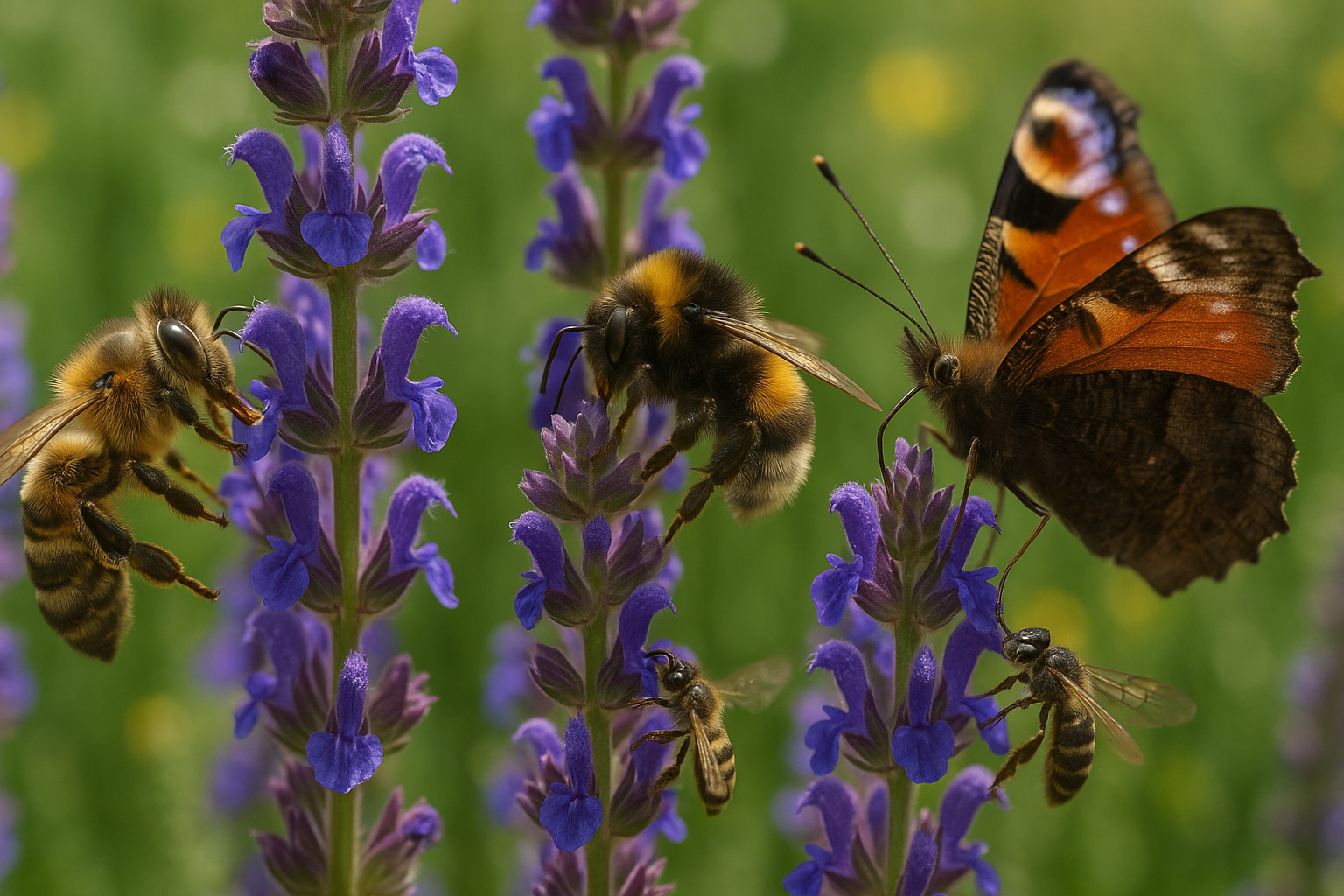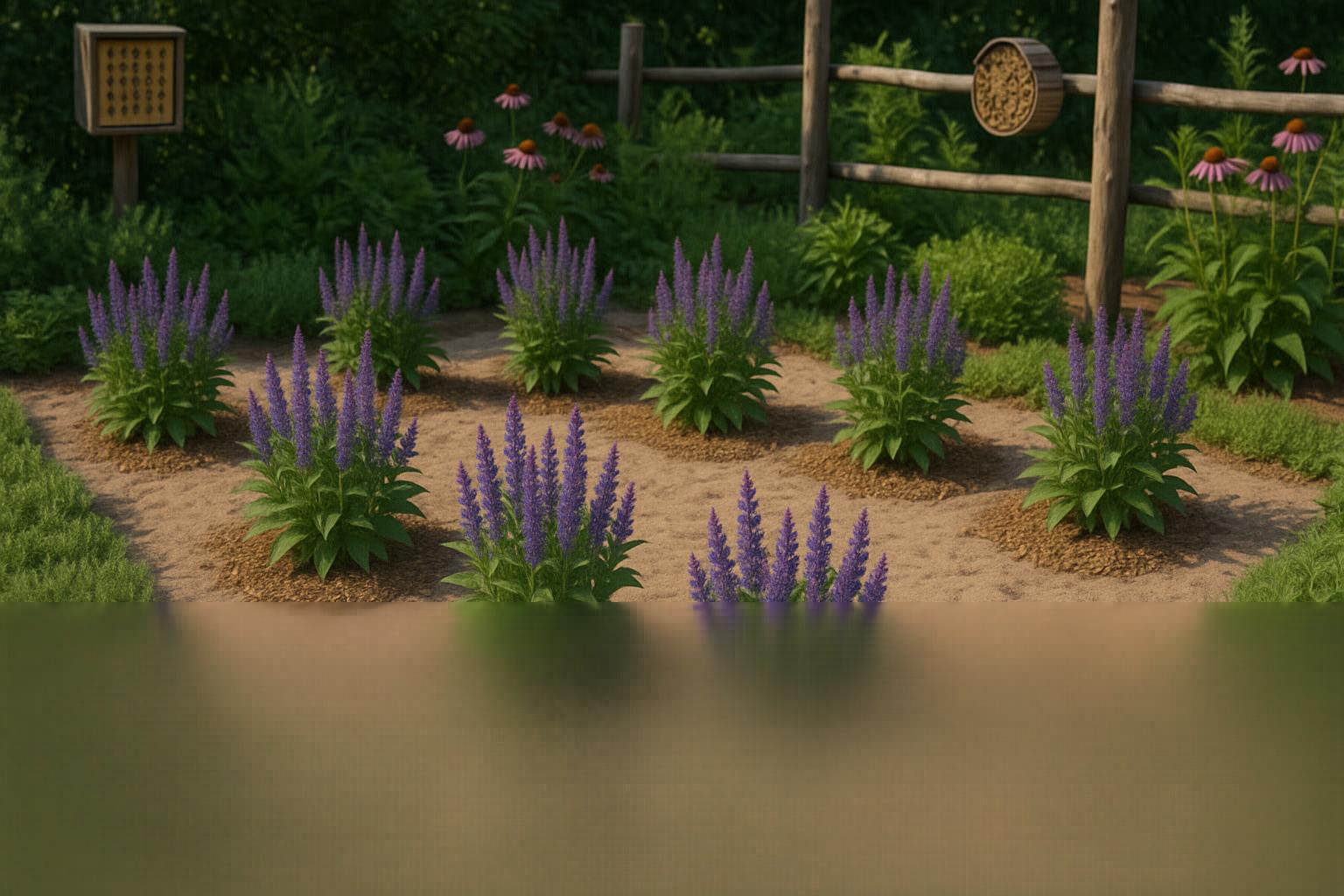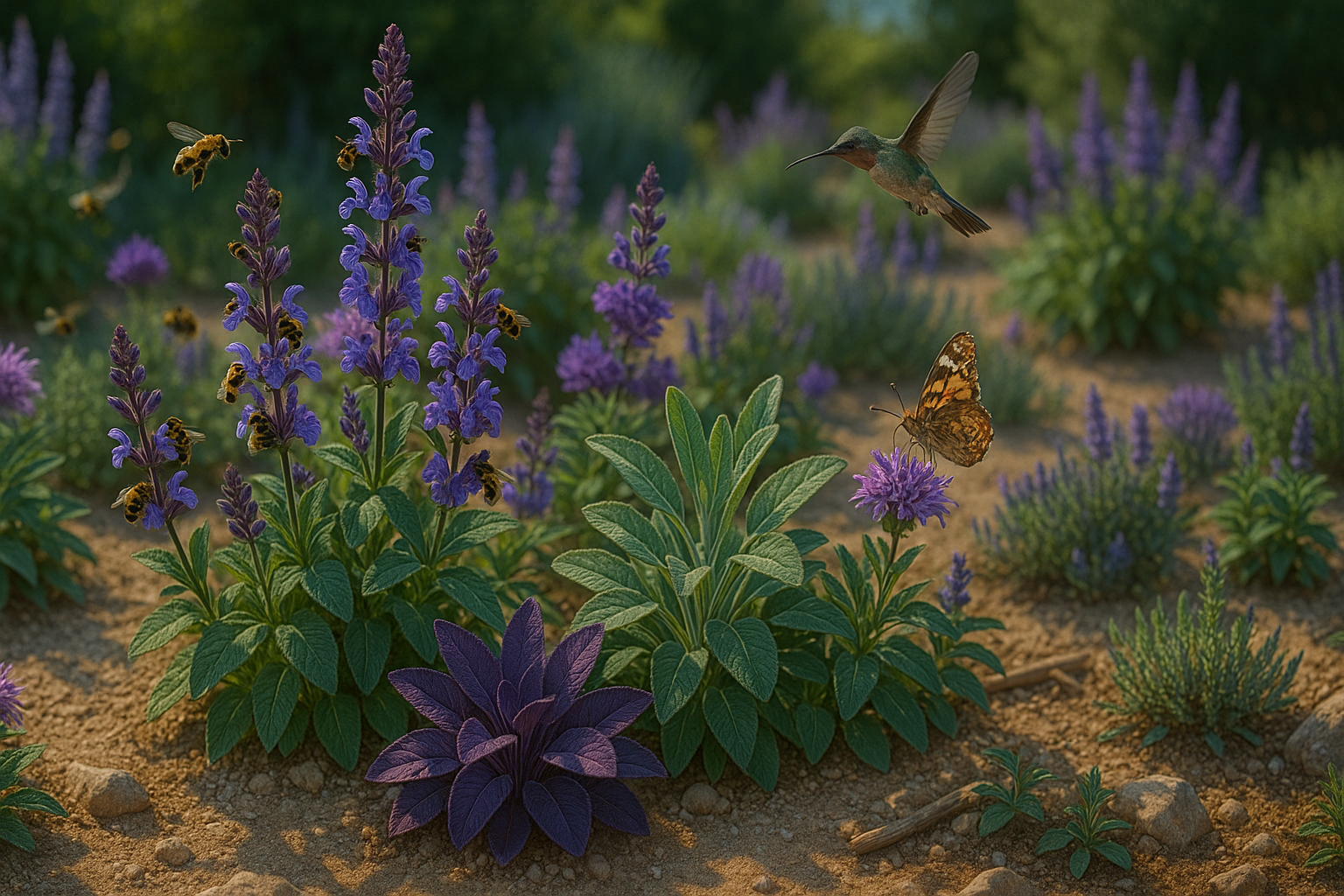Introduction
Sage for pollinators is more than just a garden favorite—it’s a powerful ally in supporting threatened bee and pollinator populations. With pollinators like bees facing habitat loss, pesticides, and climate change, every flower in our gardens counts. Sage, or Salvia, stands out among flowering herbs because of its rich nectar reserves, vibrant blooms, and long flowering season.
These traits make sage an essential plant for attracting not only honeybees but also bumblebees, butterflies, and even hummingbirds. In this article, we’ll explore why sage is such a magnet for pollinators and how you can choose the best varieties for your region.
You’ll discover practical tips for planting, caring for, and maintaining sage so it remains a reliable food source throughout the growing season. Plus, we’ll share real examples of sage varieties that thrive in different climates and provide continuous blooms.
Whether you have a roomy backyard or just a sunny balcony, you’ll find actionable steps to turn your space into a haven for bees. By growing sage for pollinators, you’re planting hope for the future—and helping your garden come alive with color and life.
Why Grow Sage for Pollinators?

Sage is a superstar when it comes to attracting pollinators like bees, butterflies, and hummingbirds to your garden. Its tubular flowers are perfectly shaped for these creatures, giving them easy access to the nectar and pollen inside. Bees, in particular, are drawn to the purple and blue hues of many sage varieties, while the rich, aromatic nectar provides a high-energy food source critical for their survival.
Butterflies are attracted by both the vibrant colors and the ample landing space on sage blossoms, and hummingbirds are drawn to the tubular blooms that fit their slender beaks. Beyond supporting pollinators directly, sage offers broader benefits for biodiversity and the ecosystem.
By planting sage, you help create a reliable food supply for vital pollinating species, which in turn supports the health of nearby fruits, vegetables, and flowering plants. This leads to increased pollination rates and more robust gardens overall.
For a low-maintenance way to boost local wildlife populations, simply plant sage in sunlit garden spots, containers, or as part of a mixed border. Real-world gardeners often note that a single sage plant can become a bustling hub of activity during the flowering season, with bees and butterflies flitting from bloom to bloom.
Growing sage is not just about having fragrant herbs at hand—it’s a direct way to help pollinators thrive, enhance your garden’s productivity, and support the intricate web of life that makes healthy ecosystems possible.
Best Sage Varieties for Bees and Pollinators
Sage is a powerhouse for pollinator gardens, offering vibrant blooms and aromatic foliage that attract bees, butterflies, and hummingbirds alike. Among Old World sages, Salvia officinalis (common sage) and Salvia nemorosa stand out, with their purple-blue spikes drawing honeybees, bumblebees, and occasionally butterflies in temperate gardens. These varieties thrive in Mediterranean-style landscapes with well-drained soils and full sun, making them ideal for many home gardeners.
On the North American native front, Salvia azurea (blue sage) and Salvia apiana (white sage) are true pollinator magnets, especially for native bees and hummingbirds. Salvia greggii, a Southwestern native hybrid, offers extended blooming and vibrant color, excelling in hot, dry climates or xeriscapes.
Comparing Old World and North American sages, the latter tend to support a broader range of native pollinators, making them an excellent choice if you want to boost local bee populations. For shady gardens or containers, consider dwarf species like Salvia ‘Hot Lips’, which tolerate partial shade and still attract pollinators.
Select sage varieties based on your region’s climate—choose drought-tolerant types for dry areas, or moisture-loving options for milder zones. Plant different species together to ensure a long bloom season and a continuous food source for pollinators. Also, avoid double-flowered hybrids, as these often provide less nectar and pollen.
By mixing native and Old World sages suited to your garden’s needs, you’ll create a bright, buzzing habitat that benefits bees and beyond all season long.
Creating a Pollinator-Friendly Sage Garden

Growing a pollinator-friendly sage garden is both rewarding and straightforward if you follow a few key guidelines. Sage thrives best with plenty of sunlight, so choose a spot that receives at least six hours of direct sun each day. The soil should be well-draining—think sandy or loamy soil—as soggy roots quickly lead to an unhappy sage plant.
Space your sage plants about 18 to 24 inches apart to ensure good airflow and give pollinators easy access. Water sparingly, allowing the soil to dry out between waterings, since sage prefers slightly drier conditions.
Enhancing Pollinator Visits
To attract more bees, butterflies, and helpful insects, surround your sage with companion plants such as lavender, echinacea, bee balm, and thyme. These plants not only boost pollinator visits but also help control pests naturally and support overall garden health.
Garden Design Tips
When designing your garden, consider planting sage along borders or edges, where its aromatic leaves and purple blooms can stand out. Interplant with patches of colorful flowers like calendula or salvia, and try planting in odd-numbered clusters for a more natural look. Pathways lined with low-growing thyme and clusters of taller plants like coneflowers add visual interest while providing pollinators plenty of landing spots.
Maintenance Tips
Keep your garden simple and low-maintenance—mulch around your plants to suppress weeds without covering the base, and deadhead spent flowers to encourage new growth. With these tips, you’ll create a thriving, beautiful garden that buzzes with life all season long.
Supporting Bees Beyond Planting
Helping bees thrive goes well beyond just planting flowers—your garden routine makes a huge difference. First, try to limit or avoid using pesticides, especially broad-spectrum chemicals that harm not only pests but also helpful pollinators like bees. If you must use something, choose organic options like neem oil or insecticidal soaps and apply them early in the morning or late in the evening when bees are less active.
Creating safe nesting habitats is just as important as providing food. Leave some bare patches of soil, piles of twigs, or old wood in quiet corners to give ground-nesting and solitary bees places to build their nests. You can also hang bee hotels or bundles of hollow stems for species that prefer above-ground nesting.
Organic gardening practices like composting, rotating crops, and adding native plants help build a resilient ecosystem that’s healthier for both pollinators and people. Avoid tidying up your garden too much—leaving some leaf litter, dried stems, and stacked logs through fall and winter offers bees and other pollinators a safe place to hibernate.
Throughout the year, consider trimming only a portion of your plants at a time and let some go to seed, providing both food and shelter. By rethinking how you care for your space, you’ll offer year-round support to the busy bees that help keep your garden and our food systems flourishing.
Troubleshooting
Growing sage is generally easy, but like many herbs, it can face a few troublesome pests and diseases. The most common issues include aphids, spider mites, and fungal diseases like powdery mildew.
Aphids cluster on tender stems and leaves, draining sap and weakening your plant, while spider mites create fine webs and tiny yellow spots. To manage these pests, regularly inspect your sage and spray affected areas with a gentle solution of soapy water or neem oil—both effective, eco-friendly, and safe for pollinators when applied early or late in the day.
For powdery mildew, which shows up as a white, powdery coating on leaves, improve air circulation by thinning crowded stems and avoid overhead watering. Prevention is key, so always water at the soil level and mulch lightly to reduce splashing soil that can carry spores onto leaves. Good garden hygiene, like clearing away fallen debris, also curbs disease.
Proper pruning keeps your sage healthy and productive: trim stems back by a third in early spring when new growth appears, and pinch off spent flowers throughout the season to encourage more blooms. Avoid hard pruning after midsummer, as this can stress your sage before winter.
By combining these eco-conscious methods, you’ll keep your sage thriving while protecting essential pollinators and maintaining a healthy garden ecosystem.
Conclusion
Growing sage in your garden isn’t just about having a fresh supply of fragrant herbs for your kitchen—it’s also a simple and effective way to support pollinators like bees and butterflies. Sage boasts eye-catching blooms filled with nectar, making it a top choice for attracting diverse pollinator species.
By adding sage varieties such as common garden sage or colorful salvias, you provide a vital food source for these important insects, helping to safeguard the biodiversity of your local ecosystem. Plus, sage plants are hardy, low-maintenance, and adapt well to containers or garden beds, so even beginner gardeners can enjoy success.
If you’re ready to get started, look for local plant swaps or nurseries that offer pollinator-friendly sage varieties, and connect with gardening groups in your area for advice and seeds. You can also learn more about pollinator conservation through organizations like The Xerces Society or your nearest extension office, which often offer practical guides and community initiatives.
By planting sage and supporting pollinator neighborhoods, you’re taking an easy but impactful step toward protecting our food systems and natural world—one garden at a time.
